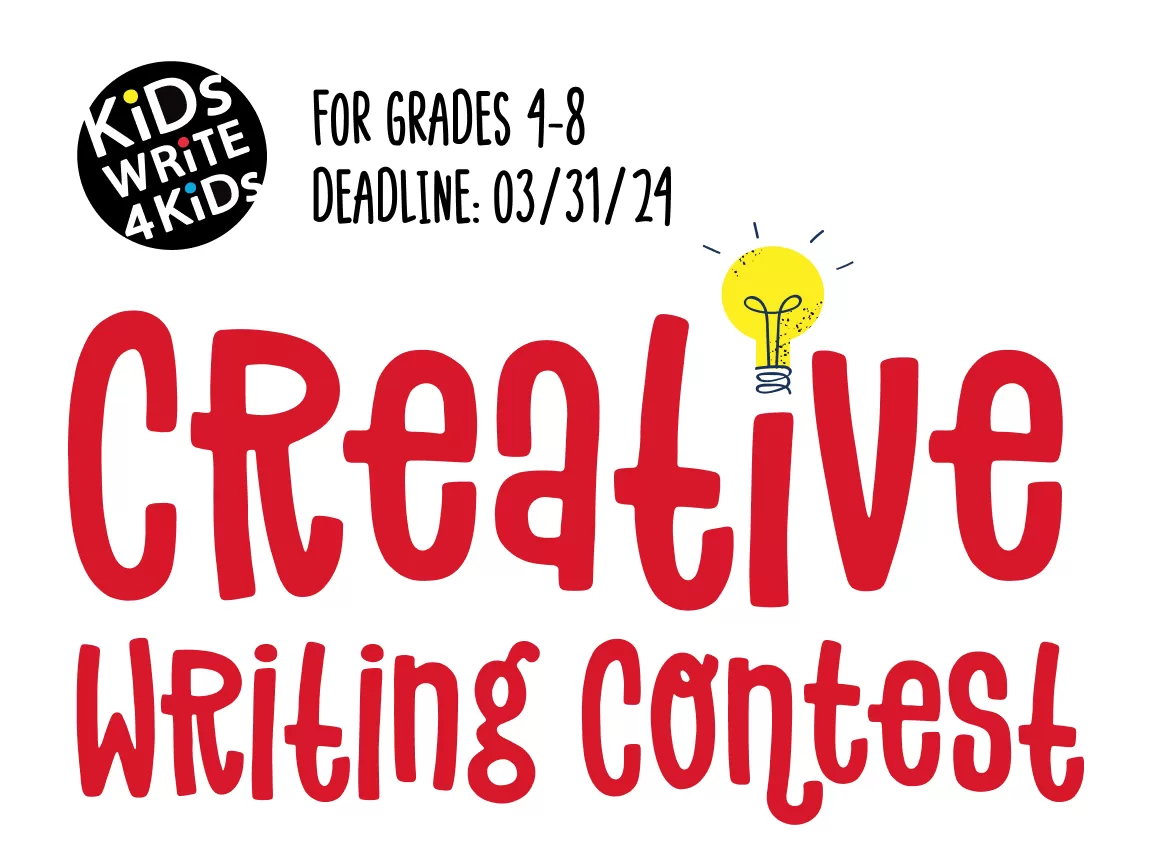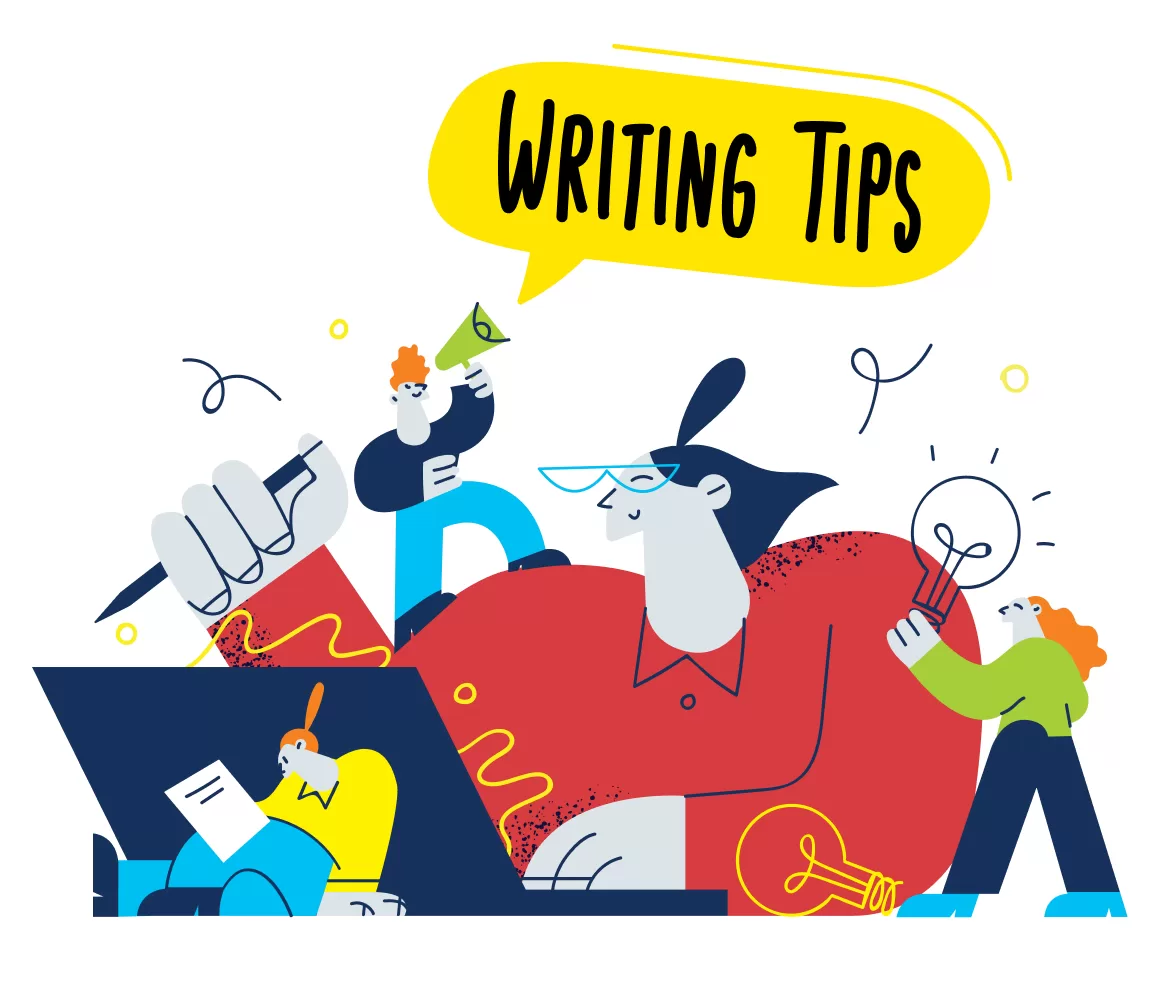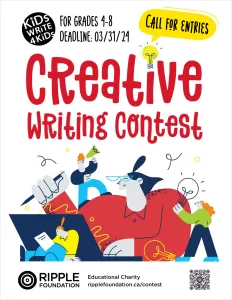

Every kid loves a good story, whether they’re writing one for school or just for fun at home. Crafting tales is more than just letting the imagination run wild. It’s about putting thoughts into words, sharing ideas, and connecting with readers in cool, unique ways.
Spread the Word
Please share the Kids Write 4 Kids creative writing contest with Grades 4-8 students and pin this poster at your school or library.
Helpful Links:
Free Virtual Creative Writing Workshop
We encourage young authors to participate in our virtual writing workshop. The Write It Workshops is a creative writing program to inspire young authors in grades 4-8. The Write It Workshops provide a foundation for young authors to participate in the Kids Write 4 Kids annual writing contest. It is free to attend. Visit workshop.ripplefoundation.ca for dates and times.
Writing Tips for Aspiring Authors
Writing stories also helps readers better read and understand stories written by other people. Below are some fun tips to help your budding young author craft their written masterpiece!
- Keep it Simple: While sophisticated vocabulary can be impressive, stick to words that feel natural for you.
- Stay Consistent with Pronouns: If you start with ‘he’ or ‘she,’ stick with it. Avoid switching between pronouns mid-story—it can confuse readers.
- Word Usage: Make sure you’re using words in their correct context. Double-checking is always a good idea if you need clarification on a word’s meaning.
- Teachers’ Submissions: We’re thrilled to receive stories from teachers! However, it’s essential to remember we aren’t grading these stories like school homework. We seek originality, creativity, imagination, and a unique voice.
- Edit, Edit and Edit: Once you finish writing, take a break and return to read your story with fresh eyes. This helps in spotting any mistakes or areas that need improvement.
- Read Aloud: Sometimes, reading your story out loud can help you catch awkward phrasing or repeated words.
- Ask for Feedback: Share your story with friends, family, or teachers. They might offer valuable insights that will enhance your story.
- Enjoy the Process: Writing is as much about the journey as the outcome. Relish the creative process and have fun with it!
The Building Blocks of a Captivating Story
The best stories have well-developed themes, engaging plots, suitable structure, memorable characters, well-chosen settings, and attractive styles. For best results, help build strength in all of these areas. Below are some of the essentials of what makes a captivating story:
- Engaging Plot: A compelling narrative that keeps readers invested, with a clear beginning, middle, and end.
- Relatable Characters: Characters that resonate with readers, showcasing growth, flaws, and authentic emotions.
- Conflict & Resolution: Introduce challenges or conflicts that characters must overcome, leading to growth or change.
- Immersive Setting: A vividly described world that pulls readers in, making them feel like they’re right there with the characters.
- Emotional Depth: A story that evokes a range of emotions, ensuring a lasting impact on readers.
- Clear Theme or Message: A central idea or lesson that readers can take away, giving the story depth and purpose.
- Authentic Voice: A unique tone or style that differentiates the story from others, reflecting the writer’s individuality.
- Well-paced Flow: Ensuring the story moves at a rhythm that maintains reader interest without feeling rushed or dragged.
- Show, Don’t Tell: Use descriptive language to paint a picture, allowing readers to infer emotions and actions rather than being directly told.
- Satisfying Conclusion: A resolution that ties up loose ends, giving readers a sense of closure, even if the ending is open-ended.
Best of luck to all participants! Remember, every story is a reflection of the unique mind behind it, so be proud of what you create. Be sure to download this story checklist to review your story before submission.
